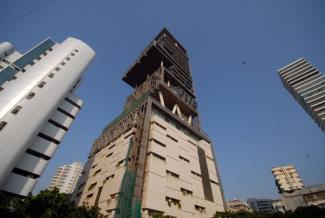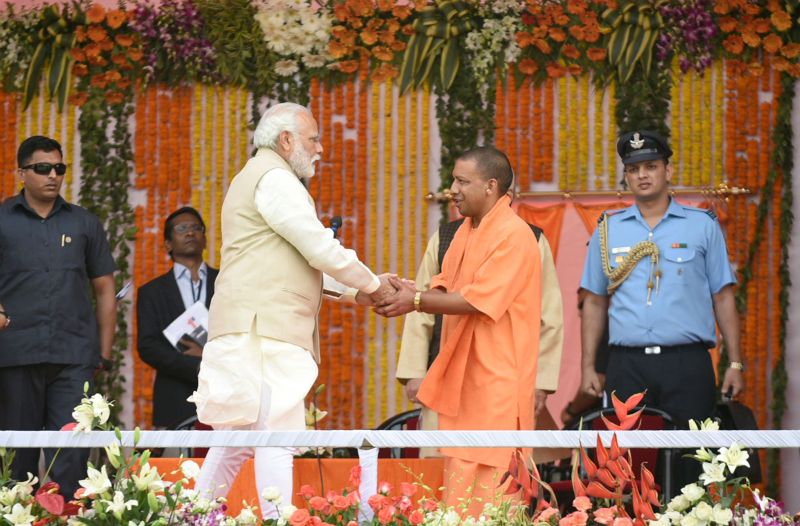Identity politics
Lip service to the SDGs

Last year, India overtook Japan as the third largest aviation market. The number of domestic passengers increased by 24 % to over 100 million. This was yet more evidence of flamboyant growth, which makes India almost the only bright spot in a bleak global economy.
Prime Minister Narendra Modi is celebrating economic success as his personal triumph. Basking in global acclaim, he is always politically correct on the global stage. He praises for the Sustainable Development Goals of the UN’s 2030 Agenda when addressing an international audience.
At the national level, however, his actions often reveal his aggressive, populist face (also note our focus section on populist politics in D+C/E+Z e-Paper 2017/02). As leader of the BJP, India’s right-wing ruling party, he serves the better-off more than his government serves the poor, whose plight it promises to alleviate.
The BJP claims to be nationalist and rejects claims that its idea of the nation is not inclusive. The BJP’s roots, however, are in the RSS, a chauvinist organisation that emphasises “Hindutva”, an ideology that seeks to establish the hegemony of Hindus and adds up to an intolerant travesty of the tolerant Hindu religion. Many RSS affiliates pursue an openly anti-minority and especially anti-Muslim, anti-Christian agenda.
In the Modi regime, text books are being changed to wipe out the story of India’s religiously diverse independence movement. Across the country extremist Hindu “cow protectors” are hounding Muslims, for whom beef is an important protein source. The government is doing precious little to protect the minority community.
Non-governmental organisations (NGOs) that dared to speak up against the Modi government have been all but silenced (see my comment in D+C/E+Z e-Paper 2016/05). Repression is particularly strong where the BJP controls the state government. Attempts are being made to restrict judicial independence.
At the G20 summit in Hamburg in July, Modi will most certainly express passionate support for the SDG agenda. His international partners, however, should be aware of India remaining, in spite of its high economic growth rate, an extremely unequal country with hundreds of millions of poor people.
The second-most unequal country
According to Credit Suisse, a multinational bank, India’s richest one percent owns 58.4 % of the nation’s wealth. That share is higher than the comparative shares in Indonesia, Brazil, China, the USA, South Africa and Mexico. The poorer half of India’s population squabbles for 4.1 % of the nation’s wealth. Among the G20, only Russia – with 75 % of wealth owned by the top one percent – is more unequal than India.
The total wealth of India’s millionaires is $ 5.6 trillion, while about half of India’s 1.25 billion people live in poverty, though not all are officially counted as poor. For example, state agencies only consider those urban people who can spend less than the equivalent of $ 0.42 per day to be poor.
Antilia, the private high-rise home of Mukesh Ambani, probably the richest Indian individual, cost a billion dollars to build and takes a staff of 600 to run. Just a stone’s throw away are Mumbai’s world famous slums, which were competently portrayed in the Oscar winning film Slum Dog Millionaire in 2008.
In view of the drastic disparities, the government’s SDG rhetoric sounds hollow, if not downright ludicrous. Before becoming prime minister, Modi was the chief minister of Gujarat. Under his rule, the state became known for deadly anti-Muslim riots in 2002 and later for successfully attracting investors. What is less well known, however, is that Gujarat’s track record on poverty reduction remained mediocre, with child-nutrition data being particularly sad.
As prime minister, Modi is taking the same big business-friendly approach. For example, 29 government-owned banks were ordered to write off bad corporate loans worth $ 62 billion in the financial years 2014/15 and 2015/16. The sum exceeded the debt relief that the previous government, led by the Congress party, had granted India’s corporate sector in a span of nine years.
Many economists praise Modi as a liberal moderniser. This assessment would be less favourable if such “corporate welfare” was taken into account. At the same time, bankers insist that highly indebted farmers must not get debt relief because such a step would damage India’s “credit culture”.
Even Modi’s radical demonetisation policy last year partially targeted black money. But it also had a sharp anti-poor edge and served a dark political purpose. Neither issue is well understood. Claiming to fight “black money”, the Modi government made 80 % of India’s cash worthless in November. Suddenly, 500 and 1,000 rupee notes were no longer valid though they could be deposited in bank accounts for three months.
The snag was that anyone who had a large cash holding had to declare the source of the funds. While nabbing some source of black money, the move harassed those who earned cash legitimately, as do all the people working in India’s huge informal sector. Moreover, it also hit tiny sums saved by poor women over many years. The super rich, who certainly play a greater role in corruption, hoard their fortunes in foreign bank accounts or real estate.
The government pretends that it is cleansing the electoral process of graft but that is obviously not the agenda. Yes, one result of demonetisation was that political parties were literally cash-strapped during the recent election campaigns in Uttar Pradesh (see blogpost) and several smaller states. The BJP, however, had taken care of its financial needs. BJP leaders must have been forewarned and media reports suggest that they deposited money in bank accounts before Modi announced demonetisation.
The government promised that all bank accounts would be scrutinised for black money before and after this radical step, but political parties were soon exempted. India’s general public will thus never know to what extent the BJP’s election campaigns benefited from having deposited money early enough to still be able to campaign, while its competitors were deprived of their cash.
In the long run, stronger reliance on digital transaction may indeed lead to more accountability in India’s economy, but, in the short run, demonetisation rigged elections in the dominant party’s favour. There are also serious concerns that electronic voting machines may have been manipulated.
There is talk of a universal basic income for everyone but it is not backed up by funding. Meanwhile the government has cut spending that benefited the poorest, including funding for basic infrastructure from roads to schools. Modi’s much publicised “Make in India” programme is not generating jobs poor people desperately need, but is essentially limited to inviting foreign investors to set up facilities in India (see my essay in D+C/E+Z e-Paper 2016/09).
Any examination of India’s commitment to the SDGs must consider this context. The BJP’s definition of democracy is crude majoritarianism with little regard for constitutional checks and balances. At the centre, the government is spending heavily on propaganda to prop up the prime minister, while the National Health Mission, which is meant to deliver maternal and child health and other social programmes are clearly underfunded.
Modi’s charisma impresses global leaders. He puts his weight behind the UN Framework Convention on Climate Change and makes a case for the India-proposed international solar alliance. Back home, however, environmental issues are clearly being given a short shrift at the altar of industry demands. The Ministry of Environment rubber stamps much of what big business desires. Solar energy is promising in business terms, which is why it has the attention of the Indian government.
The SDGs make sense. To achieve them, G20 leaders like Modi will have to do more than pay lip service at global meetings.
Aditi Roy Ghatak is a freelance journalist based in Kolkata.
aroyghatak1956@gmail.com










